#gamelia
Text

Let your nuptial hymns, your nuptial songs, greet him and his wife! ‘Twas in the midst of such wedding festivities that the Moirai formerly united Olympian Hera to the King Zeus who governs the gods from the summit of his inaccessible throne. Oh! Hymen! oh! Hymenaios! Rosy Eros with the golden wings held the reins and guided the chariot; 'twas he, who presided over the union of Zeus and the fortunate Hera. Oh! Hymen! oh! Hymenaios!

Celebrating Theogamia (southern hemisphere) with some Aristophanes. Joyous Theogamia to you all!
177 notes
·
View notes
Text
Blessed Theogamia to All!
May the divine marriage of Zeus and Hera, our King and Queen, serve as a joy to all. May you receive Their generosity in your own marriage, and may you and your spouse be blessed.
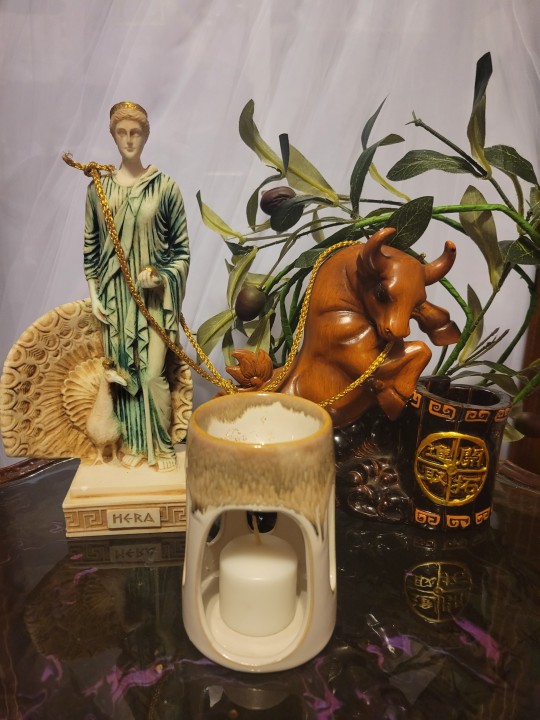

Orphic Hymn 14 - Hymn to Zeus
O Zeus much-honor'd, Zeus supremely great, to thee our holy rites we consecrate,
Our pray'rs and expiations, king divine, for all things round thy head exalted shine.
The earth is thine, and mountains swelling high, the sea profound, and all within the sky.
Kronion king, descending from above, magnanimous, commanding, sceptred Zeus;
All-parent, principle and end of all, whose pow'r almighty, shakes this earthly ball;
Ev'n Nature trembles at thy mighty nod, loud-sounding, arm'd with light'ning, thund'ring God.
Source of abundance, purifying king, O various-form'd from whom all natures spring;
Propitious hear my pray'r, give blameless health, with peace divine, and necessary wealth.
Orphic Hymn 15 - Hymn to Hera
O Royal Hera of majestic mien, aerial-form'd, divine, Zeus' blessed queen,
Thron'd in the bosom of cærulean air, the race of mortals is thy constant care.
The cooling gales thy pow'r alone inspires, which nourish life, which ev'ry life desires.
Mother of clouds and winds, from thee alone producing all things, mortal life is known:
All natures share thy temp'rament divine, and universal sway alone is thine.
With founding blasts of wind, the swelling sea and rolling rivers roar, when shook by thee.
Come, blessed Goddess, fam'd almighty queen, with aspect kind, rejoicing and serene.
#theogamia#gamelia#hellenic pagan#hellenic paganism#hellenic polytheism#hera#goddess hera#hellenic polythiest#helpol#temple of eternal hera#hellenism#hera cult#zeus#king zeus#king of the gods
269 notes
·
View notes
Text
Praise to the Hieros Gamos
Love, an untamed force
A God who wields bow and arrow
A connection, form'd between thunder and rain
The skies ever-connected, by those who reing it
Hera, mother of all, united
With Zeus, father over Gods and mortals
In love unending, victims of the arrow
Together, with strong hands forming all that is hallow
portuguese:
Amor, uma indomável força
Um Deus que empunha arco e flechas
Uma conexão, formada entre chuva e trovões
Os céus sempre-unidos, por aqueles que o encimam
Hera, mãe de todos, junto
À Zeus, pai sobre Deuses e mortais
Em amor sem-fim, vítimas da flechada
Lado a lado, com mãos fortes criando todo o sagrado
#hera#zeus#hera deity#zeus deity#hellenic polytheism#devotional text#gamelion#gamelia#hieros gamos#poetry#hymn
76 notes
·
View notes
Text
Titip Rindu Dalam Lagu (Tommy Gamelia) - Max Charles Runtunuwu
0 notes
Text
Dissecting ancient Greek wedding customs (or “How to adapt the clusterfuck they are into something somewhat doable for the 21st century”)
This post is going to be a bit different. I could stick to writing about the customs we know of from a purely historical perspective, and while it would be informative, it wouldn’t reflect what I’ve actually been up to. Some of you might already know, but I’m getting married, so I approached this topic with the intent of seeing what I could do (and get away with).
So this post is going to be more about method and the practical challenges that come with doing the groundwork of adapting very old (and often outdated) traditions in a way that makes sense for our modern times.
I do have some disclaimers to make before I get started:
Most (if not all) of the literature around ancient Greek marriage is hetero-normative. However, this does NOT mean that marriage rites shouldn’t be adapted for queer marriages or that queer marriages can’t be done within Hellenic paganism. It’s our job as reconstructionists and revivalists to rework and adapt to our needs.
Similarly, this post is bound to mention or detail cult practices that are no longer in line with our modern sensibilities. I also want to make it clear that this post is not a tutorial. I’m not saying how things should be done, I’m only exposing elements that I consider reworkable and propose suggestions so that it can help others make their own research and decisions, with the level of historicity that they deem fit.
While the wedding customs from fifth century BC Athens are decently known, the ones from other cities and regions of Greece are much more obscure outside of anecdotal and fragmentary details (with the exception of Sparta). For this reason, the Athenian example is what I’ll be using as foundation. If you reconstruct practices from other areas of the Greek World, you might find something valuable in this article: The Greek Wedding Outside of Athens and Sparta: The Evidence from Ancient Texts by Katia Margariti.
Basic/simplified structure
The typical Athenian wedding would spread over three days, and be marked by several steps, some of which are listed below. Note that the order of these steps is not precisely known and might have been flexible:
Pre-wedding:
Decorating: korythale at the door, decoration of the nuptial bedroom
The Proteleia
Filling of the loutrophoros
Wedding day
Nuptial bath
Adornment of the bride
Wedding Feast
Hymenaios
Anakalypteria
Nymphagogia
Katachysmata
Day after
Epaulia
Gamelia
Final sacrifices
Some of these steps included specific customs and traditions, not all of which are reconstructible for various reasons.
Decorations
The korythale: the korythale was a sprig, usually from an olive tree (or laurel), which was placed at the groom’s door (and perhaps the bride’s too). The word in interpreted as deriving from “koros” and “thallein”, which would translate “youth-blossom”.
The korythale is very reminiscent of the eiresione, which was a similar kind of branch of laurel used during the Thargelia and/or the Pyanepsia that had apotropaic purposes. Athenian weddings included a procession from the bride’s home to the groom’s house, so the presence of the korythale at the doors would indicate that a wedding was taking place involving the decorated homes.
While I haven’t seen any one make this interpretation, I would still be tempted to argue that decorating the thresholds of houses has a similar protective and luck-bringing purpose than the eiresione, which was also hung above the door of Athenian houses.
The thalamos (nuptial bedroom): While there is no doubt the houses were properly decorated for the occasion, we have mention of special care given to the nuptial bedroom.
It’s important to understand that the procession from the bride’s house to the groom’s went up to the bedroom door, it was generally an important location and its preparation is seen represented on ancient pottery. Euripides mentions the adornment of the bed with fine fabrics, while Theocritus mentions the smell of myrrh (sacred to Aphrodite). There is also evidence that, in the Imperial period, the practice of hanging curtains to create a canopy above the bed was adopted, very likely from Egypt.
When it comes to adapting this today, it is pretty straightforward and there is plenty of room for personalization. The korythale could be challenging depending on how easily available olive or laurel are in your area. I would also argue that the custom could be more loosely adapted so that instead of being at the houses’ doors, it could take the form of a floral arrangement at the door of whatever venue you are using.
Proteleia
In short, the proteleia refers to sacrifices and offerings that would be made to various gods before the wedding. The exact timing of these is more or less unknown, but we have reasons to believe they could be done a day or a few days before the wedding, and perhaps also on the day of the wedding. These offerings were made independently by each family.
It is in this context that the offering of a lock of hair and of childhood items is best known for brides. The recipients of the offerings are varied: In Athens the most mentioned are the Nymphs and Artemis, but various sacrifices to Aphrodite, Hera, Athena and Zeus were also performed. In other parts of Greece, pre-nuptial customs often included sacrifices to local heroines. Plutarch, in the 2nd century AD (and therefore way after the focus of this post) mentions the main five nuptial deities to be Zeus Teleios, Hera Teleia, Aphrodite, Peitho and Artemis.
Today, I believe the exact choice of who to offer to and what to offer very much comes down to personal preferences and circumstances. While we assume that both families made prenuptial sacrifices, we know very little of the groom’s side of things, since the focus was on the bride, and the rite of passage aspect was not present for the groom in Ancient times. This is a gap that leaves room for modern innovation eg. including Apollon to either replace or accompany Artemis or choosing a group of deities that is more couple-centric rather than family-centric.
Personally, I have settled on Aphrodite, Hera and Artemis and have integrated a Spartan custom that includes the mother of the bride in the sacrifice to Aphrodite. Hera Teleia will receive a lock of my current hair, while Artemis will receive a lock of hair from my first haircut as a child (that my mother has kept all these years), alongside some other trinkets. The groom will honour Zeus Teleios in a passive way. And I will honour the Nymphs through the the rite I will explain next.
Nuptial baths
Both bride and groom had a ritual bath before the wedding. Its purpose was of cleansing and purificatory nature, and is consistent with other water-based pre-sacrifice purifications. What made the bride and groom's baths distinctive was their preparation. The bath water used to be drawn at a specific spring or river. At Athens, the water for bridal baths came from the Enneakrounos, the fountain house for the spring Kallirrhoe, but each city had its dedicated source. The water was carried in a special vase named the loutrophoros (bathcarrier) and the act of fetching the water and bringing it back to the homes constituted a procession. The loutrophoros was often given as offering to the altar of the Nymphs after the wedding. It was an important symbol of marriage, to the point that, if a woman died before being married, she would often be buried with a loutrophoros.
This will be more or less difficult to adapt depending on circumstances and environment, but the logic of a purifying bath (or shower even) can be kept (though I would discourage bathing in water you are not sure of the cleanliness of). The idea of having a specific vessel can also be kept. Personally, I plan to have a special vessel for some type of purified water, and while I may not bathe in it, I plan to sprinkle it and/or wash my hands with it.

Adornment of the bride (and groom)
Traditionally, the bride would have a nympheutria (which we could equate as a bridesmaid, but seems to have often been a female relative) charged of helping the bride get ready. I won’t get into the details of the clothing we know about, mostly because there seems to be a lot of variation, and because I consider this to be a very personal choice. However, we can note that both groom and bride were adorned with a wreath or a garland of plants that were considered to have powers appropriate for the occasion (sesame, mint, plants that were generally considered fertile or aphrodisiac). Perfume is also something attested for both bride and groom, especially the scent of myrrh. The bride would wear a crown, the stephane, which could be made out of metal or be vegetal (the stephane is now the object of its own crowning ceremony in Greek Orthodox weddings). The bride’s shoes were also particular for the event, and named nymphides. The bride’s veil was placed above the crown.
Hymenaios and Feast
I am grouping these two since they are linked. The feast was more or less the peak of the wedding ceremony and lively with music and dances, as Plutarch indicates (Moralia, [Quaest. conv.] 666f-67a):
But a wedding feast is given away by the loud cries of the Hymenaios and the torch and the pipes, things that Homer says are admired and watched even by women who stand at their doors.
The hymenaios was a sung hymn in honour of the couple and the wedding, and there were other songs that were specifically sung at weddings. However the hymenaios wasn’t only for the feast, these songs would be sung also during the processions. The hymenaios also had the purpose of ritually blessing the couple, a ritual that bore the name of makarismos.
As for the feast, it was obviously abundant with food and the prenuptial sacrifices provided the meat that would be served. There is otherwise very little difference with what a modern wedding feast would be like: food, drink, music and dance around which gathered friends and relatives of the couple. Like today, the wedding cake(s) was an important part of the celebration. It was called sesame and consisted of sesame seeds, ground and mixed with honey and formed into cakes to be shared with the guests.
Anakalypteria
Note that there is a bit of a debate around this step, which is the unveiling of the bride. Some believe the bride kept her face veiled until this part of the wedding, where her face would be uncovered for the groom to see. Others interpret this step the other way around, where the bride is then veiled as a result of being now married. The timing of the unveiling is also up for the debate. It might have been during the feast (at nightfall), or after once the couple was escorted to the bridal chamber. There doesn’t seem to be a clear consensus.
The concept of unveiling the bride is otherwise something that isn’t unknown to us as a modern audience. As with everything else, how to interpret and modernize it is up to personal preference.
Nymphagogia and Katachysmata
The nymphagogia aka the act of “leading the bride to her new home” took place at night, likely after the feast. It is at this point that the groom ritually led the bride to his home by taking her by the wrist in a ritual gesture known as χεῖρ’ ἐπὶ καρπῷ (cheir’ epi karpo). The relatives and friends of the couple formed a festive procession that accompanied them to their new home accompanied by music and songs. The mother of the bride led the procession carrying lit torches, while the groom’s mother awaited for the new couple in their home, also bearing lit torches.
Once there, the rite of the katachysmata would happen. The couple would be sat near the hearth and the guests would pour dried fruits, figs and nuts over the bride and groom as a way to incorporate them into the household and bless the union with prosperity and fertility. As part of this rite, the bride ate a fruit (either an apple, quince or pomegranate). It is only after this step that the couple would be escorted to the bridal chamber.
These two rites are tricky to adapt in a modern context because of how location-specific they are (and that’s not even taking into account the implications of having family escort you to your bedroom etc). My take would be that the katachysmata is not too far off from the custom of throwing rice/flowers at the couple after the ceremony, and could probably be incorporated as such. The torches could also be replaced by any source of light placed in a meaningful location, depending on the where the wedding is being held. The nymphagogia could also do with an update, the easiest of which could simply be holding hands while leaving the wedding ceremony.
The day after (Epaulia, Gamelia & sacrifice)
The epaulia refers to wedding gifts to the couple, which would be given the day following the ceremony. At this point, it is implied that the couple has consummated their marriage and are officially newly-weds. Pausanias informs us that the term “epaulia” (also?) refers to the gifts brought by the bride’s father in particular and included the dowry.
After the epaulia, the bride's incorporation into her husband's house was complete. This might have been when the groom held a feast for his phratria (aka direct family), as a way to conclude the wedding.
As for final sacrifices, the bride herself may have marked the end of her wedding by dedicating her loutrophoros at the sanctuary of Nymphe, south of the Acropolis.
The epaulia could be adapted, in modern terms, with having a registry. Should someone choose to have a specific vessel linked to the ritual bath today, it could very well be kept, dedicated to the Nymphs and used as a small shrine. Considering how symbolic the object is, there is also room for it to become a piece of family heirloom.
Final words
This is really only a small summary of what a wedding could have looked like, sprinkled with a few ideas of how to manage the gaps, discrepancies and limitations. As I said in my introductions, there are details I haven’t mentioned. Some of the customs detailed here have clear modern counterparts, but others don’t. I’d like to conclude by addressing these.
First, the ancient Greek (Athenian) wedding is completely devoid of priestly participation. It was entirely planned, organized and led by the two families. Religious responsibilities were entirely self-managed. I find this point important to remember because it makes it much more accessible than if modern Hellenic pagans had to seek out an external authority.
Some of you might have noticed the absence of wedding vows, at least in a formal form like the one we are used to in our modern days (derived from Christian and Jewish traditions), this is not an oversight, there simply were none that we know of. As a sidenote, I would also advise against turning a wedding vow into a formal oath. I’m still debating on what to do myself, but I’m leaning towards a religiously non-binding vow that won’t curse me should things go wrong.
Adapting the structures and rites of the ancient wedding to today’s framework of ceremony will naturally lead to changing the order of things, on top of sacrificing elements for the sake of simplicity, practicality, personal preferences and, very likely, visibility. Unless you’re lucky enough to do a private elopement, chances are that relatives and friends might be there, and not all might know or even approve of your faith. I hope this post shows that there can be ways to include traditional religious elements that will go unnoticed to the untrained eye, like I hope it showed that the private nature of the ancient Greek wedding rites is a significant advantage for modernization.
#hellenic polytheism#hellenic paganism#hellenic pagan#heradeity#greek history#ancient greece#zeus deity#aphrodite deity#artemis deity#hellenic reconstructionism#wedding rites
753 notes
·
View notes
Text
greek god epithets
this post includes zeus, hera, athena, demeter, ares, hephaestus, and poseidon. for part two including hades, persephone, hekate, aphrodite, hermes, apollo, artemis, and dionysus click here
epithets are surnames (as <god's name> <epithet>) used to call upon the greek gods without saying their name directly. the epithet that you choose often corresponds to the purpose you are invoking them for
ZEUS:
-OMBRIUS/HYETIUS/APHESIUS= of the rain
-SCOTITAS= the dark/murky
-CERAUNIUS= of the thunderbolt
-ASTRAPAEUS= of the lightning
-CATAEBATES= the descending
-LABRANDEUS= the furious/raging
-ICMAEUS= of moisture
-CONIUS= of the dust
-MAEMACTES= the boisterous
-EVENEMUS= of fair winds
-LIMENOSCOPUS= the watcher of sea havens
-BASILEUS/CORYPHAEUS= the king/chief/ruler
-HYPATUS/HYPSISTUS= the supreme
-CTESIUS= of the house/property
-HERCEIUS= of the courtyard
-BULAEUS= of the council
-AMBULIUS= the counsellor
-TELEUS/ZYGIUS= of marriage
-MOIRAGETES= the leader of the Fates
-CLARIUS= of the lots
-SEMALEUS= the giver of signs (like clairvoyant messages)
-MECHANEUS= the contriver
-COSMETES= the orderer
-THEUS AGATHUS= the good God
-EPIDOTES= the giver of good
-PLUSIUS= of wealth
-PHILIUS= of friendship
-XENIUS= of hospitality/strangers
-HICESIUS= of suppliants
-PHYXIUS= of refuge
-PALAMNAEUS= the punisher of murderers
-CATHARSIUS= of ritual purification
-PROSTROPAEUS= the turner of pollution
-APEMIUS= averter of ills (ailments)
-SOTER= the savior/deliverer
-MILICHIUS= the gracious/merciful
-PANHELENIOS= of all the Greeks
-LAOITES= of the people
-POLEIUS= of the city-state
-SOSIPOLIS= the city-savior
-ELEUTHEREUS= of freedom
-CHRYSAORUS= of the Golden Sword
-STATIUS/AREIUS= of war/the warlike
-STHENIUS= of strength/the strong
-TROPAEUS= turns to flight/who defeats
-PHYXIUS= puts to flight/banishes
HERA:
-PAIS= the girl
-NYMPHEUOMENE= the betrothed bride
-TELEIA= the (adult) woman/the goddess of marriage
-CLEIRA= the widow
-GAMELIA= of marriage
-ATAUROTE/PARTHENOS= the virginal
-ZYGIA= presider over marriage
-HENIOCHE= of the chariot
-ANTHEA= of the flowers
-ARGOEA= of the ship Argo
-HYPERCHEIRIA= whose hand is above
-BASILEIA= the queen
ATHENA:
-NIKE= victory
-AREIA/PALLAS= of war/the warlike
-ZOSTERIA= girded in armor
-STHENIAS= of strength/the strong
-POLEMODOCUS= the war sustaining
-HIPPIA= of horses
-CHALINITIS= bridler of horses
-ERYMA= the defender
-SOTEIRA= the savior
-ALALACOMENEIS= the protectress
-POLIAS= of the city
-POLIUCHUS= the city protectress
-POLIATIS= the keeper of the city
-ERGANE= the worker
-PAEONIA= the healer
-HYGEIA= of good health
-ALEA= of escapes to refuge
-AMBULIA= the counsellor
-PRONOEA= of foresight
-APATURIA= the deceiver/of deception
-MACHANITIS= contriver of plans
-OXYDERCES= the sharp sighted
-CORYPHASIA/CORYPHAGENES= relating to the head (like her birth)
-PARTHENUS= the virgin/maiden
-CORIA= the maiden
-XENIA= of hospitality (especially to strangers/foreigners)
DEMETER:
-CHTHONIA/DEO= of the earth
-CHLOE= the green/the first shoots
-EPOGMIA= of the furrows
-ANESIDORA= she who sends forth gifts
-PLUTODOTIRA= the giver of wealth
-CARPOPHORUS/MALOPHORUS= bearer of fruit
-THERMASIA= of warmth/heat
-MEGALA THEA= the great Goddess
-MEGALA MATER= the great Mother
-THESMOPHORUS= the bringer of law
-THESMIA= of the laws
-PROSTASIA= the patron/leader
-PANACHAEA= of all the Greeks
-ERINYS= of fury/wrath
-MELAENA= the black
-LUSIA= the bathing/purifying
-HORAPHORUS= the bringer of season
-POLYPHORBUS= the all nourishing/bountiful
-AGLAOCARPUS= the giver of goodly fruit
-AGLAODORUS= the bestower of splendid gifts
-CALLISTEPHANUS= the beautifully crowned
-EUSTEPHANUS= the lovely crowned
-EUCOMUS= the lovely haired
-XANTHE= the blonde/golden-haired
-CYANOPEPLUS= the dark veiled/cloaked
-CALLISPHYRUS= the beautiful
-CHRYSAORUS= of the golden blade
-DIA THEA= the bright Goddess
-SEMNE= the holy/revered
-HAGNE= the pure/chaste/holy
-ANASSA/POTHIA= the queen
-POTHIA THEAON= the queen amongst goddesses
-CYDRA THEA= the glorious/noble goddess
-ORGIA= of religious orgies
-MYSTERIA= of mysteries
ARES:
-THERITAS= the beastly/brutish
-HIPPIUS= of the horses
-APHNEIUS= the abundant
-GYNAECOTHOENAS= feasted by women
-MIAEPHONUS= the blood stained/bloody
-LAOSSOUS= he who rallies men
-BROTOLOEGUS= the manslaughtering
-ANDREIPHONTES= the destroyer of men
-CHALCEUS/CHALCOCORUSTES= of the bronze/armed with bronze
-TEICHESIPLETES= the stormer of cities
-AATUS POLEMOEO= insatiate of fighting/war
-ENCHESPALUS= spear-brandishing
-RHINOTORUS= shield/flesh piercing
-OXYS= the sharp/piercing
-THOOS= the swift/fleet
-THURUS= the violent/furious
-OBRIMUS= the strong/mighty
-DINUS= the terrible/fearsome
-ENYALIUS= the warlike
-CHRYSOPELEX= of the golden helm
HEPHAESTUS:
-CLYTUS= the renowned/famed
-PERICLYTUS/AGACLYTUS= the very famed/the glorious
-CLYTOMETIS/CLYTOTECHNES= famed for crafts/skills
-POLYTECHNES= of many skills
-POLYPHRON= the ingenious/inventive
-POLYMETIS= resourceful
-AETHALOIS THEUS= the sooty god
-CHALCEUS= the bronze/copper smith
-CYLLOPODIUM/AMPHIGYEIS= referring to his disability
POSEIDON:
-BASILEUS= the king/lord
-PELAGAEUS= of the sea/marine
-AEGAEON= of the Aegeon sea
-PROSCLYSTIUS= who dashes against
-ASPHALIUS= who secures safe voyage
-EPOPTES= the overseer/watcher
-GAEOCHUS= the holder of the earth
-ENNOSIGAEUS= shaker of the earth
-HIPPIUS= of the horses
-HIPPOCURIUS= the horse tender
-PHYTALMIUS= the plant nurturer
-GENETHLIUS= of the kin/the kindred
-DOMATITES= of the house
-LAOITES= of the people
#pagan#paganism#polytheist#witchblr#witchcraft#polytheism#witch#magic#magick#ancient greece#hellenic pagan#hellenic polytheism#hellenic polythiest#hellenic deities#hellenic gods#hellenism#hellenic paganism#athena#zeus#hera#ares#demeter#poseidon#hephaestus#deity work#deity#deity worship
517 notes
·
View notes
Text

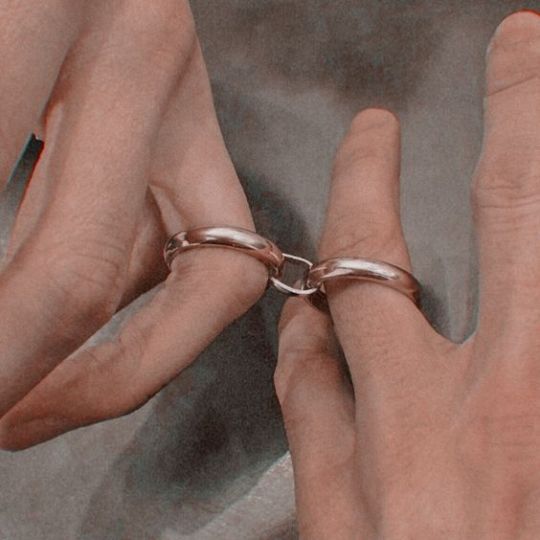

MY FAV EPITHETS FOR LADY HERA
꩜ Νυμφευομενη (Nympheuomene) - betrothed bride
꩜ Γαμηλια (Gamelia) - of marriage
꩜ Ανθεια (Anthea) - of the flowers
꩜ Ἡνιοχη (Henioche) - of the chariot
꩜ Ακραιη (Acraea) - of the heights
all information is from theoi.com
39 notes
·
View notes
Text
Aphrodite
Content warning: Because of the deity being discussed in this post, there are talkings of sex and sexuality under the cut.
Who is Aphrodite?
Aphrodite is the Greek goddess of love, beauty, desire, passion, pleasure, sexuality, fertility, and procreation. She has many epithets, or titles, that relate her to other aspects as well.
Antheia - The blooming, Friend of flowers
Anadyomene - She who rose from the sea
Ambologera - Delayer of old age
Aphrogenea - Foam born
Apostrophia - Expeller of sinful desires
Areia - The warlike
Callipygos - Of the beautiful buttocks
Charidotes - Giver of joy
Elikoblepharus - She with fluttering eyelids
Eleemon - Merciful
Eratoplucamus - Lovely haired
Gamelia - She who resides over marriage
Morpho - The fair shaped, Of shapely form
Nicephorus - Bringer of victory
Ourania - Heavenly
Pandemos - Common to all people, Of all people
Panmorphilos - Lover of all shapes
Peitho - Persuasion
Pontia - Of the sea
Philomeides - Laughter loving
Philopaneia - Lover of all
These are just some of her many names. She has many more epithets, including newer ones applied through UPG and modern practice.
Aphrodite and the Moon
This section is entirely UPG
I associate Aphrodite with the moon, more specifically, the moon's cycle. I do not see her as *the* moon goddess, but rather as having an aspect of the moon. I see her as the cycle the moon follows. There’s a few factors that contribute to this UPG of mine.
The first being that the moon’s cycle and a woman’s cycle are roughly the same length in time. I guess here it’s important to note that I am female, and a part of my work with Aphrodite has been centered around that.
The second is that the moon controls the tides. Aphrodite is considered a sea goddess. But my association goes a little deeper than that. I have always heavily associated the ocean and its movements with Aphrodite, beyond just her usual ‘risen from the sea’ aspect. I don’t see her as the personification of the sea, or *the* ocean deity, but as the movements of the ocean. The waves, the tides, the things washed up on the shore in the waves, the feeling of a wave pulling and pushing the water as you stand in it. \
I really began to understand this association when I started working with the moon phases, and learning about how to live and plan by them. A book I highly recommend to learn about this subject is Lunar Living by Kirsty Gallagher.
Offerings for Aphrodite.
Chocolate
Honey
Fresh Fruits
Cherries
Apples
Olive oil
Water
Apple juice
Wine, especially red
Teas infused with herbs associated with her
Or just any tea
Fruit and/or herb infused water
Roses
Jasmine
Myrtle
Cinnamon sticks*
Orchids*
Love letters (to yourself, or to someone else)
Jewelry
Seashells
Devotional Acts
Self care
Morning / night beauty routines
Write love letters to yourself or to someone else
Visit the ocean if possible
Practice gratitude
Practice self confidence
Listen to music that makes you feel confident
Listen to music that reminds you of Aphrodite
Practice self acceptance
Tell your loved ones you and appreciate them
An act of kindness toward a stranger
Give compliments to yourself or to someone else
Watch a romance movie
Read Sappho’s poetry
Read poetry about love, romance, or sexuality
Read poetry dedicated to her
Explore your sexuality
Learn about the important of practicing safe sex
Pleasure yourself
Read a romance novel
Read an erotica novel
Care for your mental and physical self
Learn about the ocean
Read her myths
Read modern retellings of her myths
Write retellings of her myths
Write poetry or song dedicated to her
Practice cyclical living (by the moon phases)*
Practice sea focused witchcraft
Dance
Create a playlist dedicated to her
Meditate and ask her to be present
Other Aspects of Aphrodite
People often forget, especially with the more popular and well known deities, that they can have aspects most would view as negative.
Aphrodite isn’t just the goddess of love and beauty. She also resides over the negative aspects of her associations. Jealousy, obsession, clinginess, heartbreak, self-centeredness, manipulation.
This isn’t to say that working with her will bring those things. You can work with her to get past these things or move them out of your life just as you would any other aspect of her.
Anything in this post marked with the symbol * means that it is my own UPG
#paganism#paganblr#aphrodite#greek gods#aphrodite deity#hellenic polytheism#deity work#deities#deity#aphrodite worship
101 notes
·
View notes
Text






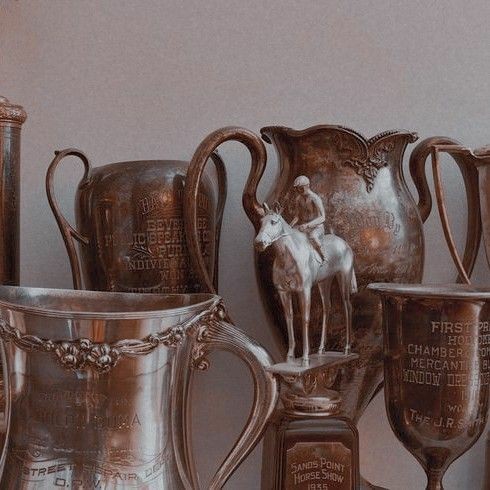

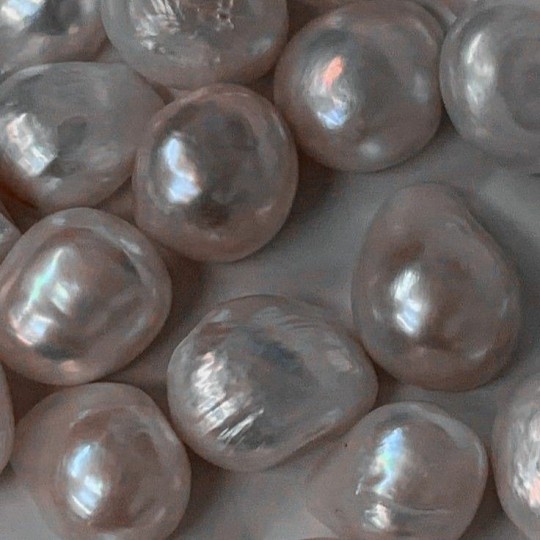
Deity Aesthetic: Hera
Queen of the Gods , Greek Goddess of marriage, women, childbirth, and family. Patroness and protectress of married women.
Some of her titles:
Queen of Heaven
Queen of the Gods
Queen of All Goddesses
Queen of Olympos
Glorious Goddess
Goddess of Childbirth
Golden One
Golden Throned
Mistress of Animals
Mother of Showers and Wind
Hellenic Epithets:
Zygia (Uniter)
Bounaia (of Bounos; a hero)
Ammonia (of the Oracle of Zeus Ammon in Libya)
Gamelia (of Marriage)
Lakinia (of Lakinios; a hero)
Leukolenos (White-Armed)
Limenia (of the Harbor)
Nympheuomene (Led as a Bride)
Akraia (of the Heights)
Pais (Maiden)
Pelasga (Pelasgian Woman or Goddess)
Prodromia (of the Pioneer)
Symbolism of Hera:
The diadem
The scepter
The pomegranate
The lily flower
#hera#hellenic polytheism#hellenic paganism#hellenism#hellenic pagan#hellenic polytheist#greek gods#hellenic deities#hellenic gods#hellenic worship#deity worship#deity work#deity moodboard#moodboard#hera goddess#greek pantheon#ancient greece
250 notes
·
View notes
Text

A devotional moodboard for Hera Gamelia.
#queen of the heavens#hera worship#hellenic polythiest#hellenic paganism#NIKE MUSINGS#NIKE CREATES#queen hera 🦚
5 notes
·
View notes
Text
Holidays 2.6
Holidays
Aaron Burr Day
Aldus Day
Alzheimer’s Disease Day (Florida)
Battle of Port Henry Day
Bob Marley Day (Jamaica)
Food Freedom Day (Canada)
International Day of Zero Tolerance to Female Genital Mutilation (UN)
International Translator Mug Appreciation Day
Lame Duck Day
Monopoly Board Game Day
National Ashley Day
National Eighties Day
National Laplander’s Day (Sweden)
National May Thai Day (Thailand)
National Seaweed Day (Japan)
National Tinnitus Day
National Valentine Shopping Reminder Day
National Werewolf Day
New Zealand Day
Pay-a-Compliment Day
Reclaim Social Day
Reggae Day
Ronald Reagan Day (California)
Saamelaisten Kansallispäivä (Finland, Norway)
Sami National Day (Finland, Norway, Sweden)
Unity Day (Burundi)
Waitangi Day (New Zealand, Niue)
Wear Orange 4 Love Day
World Compliment Day
World Concertina Day
World Day without Mobile Phones
World Muaythai Day
Yes Tree Day (French Republic)
Food & Drink Celebrations
International Day of the Bartender
International Frozen Yogurt Day
Maple Syrup Day (Canada)
Matcha Day (Japan)
National Chopsticks Day
National Seaweed Day (Japan)
1st Tuesday in February
African-American Coaches Day [1st Tuesday]
International Eggplant Day [1st Tuesday]
Safer Internet Day [1st Tuesday]
Independence & Related Days
Massachusetts Statehood Day (#6; 1788)
Überstadt (Declared; 2010) [unrecognized]
Zenia (Declared; 2020) [unrecognized]
Festivals Beginning February 6, 2024
Carnival of Tarragona (Tarragona, Spain) [thru 2.13]
Cerknica Carnival (Cerknica, Slovenia) [thru 2.14]
Colusa Farm Show (Colusa, California) [thru 2.8]
Sanremo Music Festival (Sanremo, Italy) [thru 2.10]
Spokane Ag Expo (Spokane, Washington) [thru 2.8]
Feast Days
Achille Devéria (Artology)
Amand of Poitou (Christian; Saint) [bar staff, bartenders, brewers, publicans]
Aphrodisia (The Feast of Aphrodite; Ancient Greece)
Aphrodite Genetrix’s Day (Pagan)
Barsanuphius of Palestine (Christian; Saint)
Bob Marley Day (Rastafari; Saint)
Dorothea of Caesarea (Christian; Saint) [brewers]
Dorothy (Christian; Saint) [gardeners, flowers]
Feast of the Apostle of the Franks (Christian)
Feast of the 26 Martyrs (Japan)
Gamelia (Celebration of Marriage of Zeus & Hera; Ancient Greece)
Guarinus (Christian; Saint)
Hadaka Matsuri (Naked Festival; Japan)
Hildegund, O.Praem (Christian; Saint)
Jacut (Christian; Saint)
Karl von Kügelgen (Artology)
Mateo Correa Magallanes (one of Saints of the Cristero War)
Mél of Ardagh (Christian; Saint)
Melchu (Christian; Saint)
Othon Friesz (Artology)
Oto Matsuri (Fire Festival; Japan)
Paul Miki and Twenty-six Martyrs of Japan (Christian; Martyrs)
Peter Baptist (Christian; Saint)
Relindis (Renule) of Mosaic (Christian; Saint)
Rubic-Cube Muddling Championships (Shamanism)
Self Stimulation Day (a.k.a. Self-Love Day; Pastafarian)
SKF Robot Smokestack (Muppetism)
Stray Animal Day (Celtic Book of Days)
Titus (Christian; Saint)
Tlaloc Day (Church of the SubGenius; Saint)
Vedastus (a.k.a. Vedast or Vaast; Christian; Saint)
Winter Snow Festival (Northern Japan; Starza Pagan Book of Days)
Zacchaeus Sunday (Orthodox Christian)
Zeuxis (Positivist; Saint)
Lucky & Unlucky Days
Perilous Day (13th Century England) [8 of 32]
Prime Number Day: 37 [12 of 72]
Tomobiki (友引 Japan) [Good luck all day, except at noon.]
Premieres
American Dad (Animated TV Series; 2005)
Antigone, by Jean Anouilh (Play; 1943)
Barenaked Ladies Are Men, by Barenaked Ladies (Album; 2007)
The Big Sleep, by Raymond Chandler (Novel; 1929)
The Big Wash (Disney Cartoon; 1928)
Billy Liar, by Keith Waterhouse (Novel; 1959)
Black Widow (Film; 1987)
Blank Night or The Age of Nothing (Rocky & Bullwinkle Cartoon, S3, Ep. 150; 1962)
Blues Brothers 2000 (Film; 1998)
Bosch (TV Series; 2014)
The Brasher Doubloon (Film; 1947)
The Bull Fight (Terrytoons Cartoon; 1935)
Coraline (Animated Film; 2009)
Crazy Town (Noveltoons Cartoon; 1954)
Deep Night, by Rudy Valley (Song; 1929)
Funny Funny Business (Terrytoons Cartoon; 1942)
Get Rich or Die Tryin’, by 50 Cent (Album; 2003)
The Happy Tots’ Expedition (Color Rhapsody Cartoon; 1940)
Infinity On High, by Fall Out Boy (Album; 2007)
Jupiter Ascending (Film; 2015)
Keith Waterhouse (Writerism)
The Kid (Silent Film; 1921)
Light of Day (Film; 1987)
Little Black Sambo (Ub Iwerks Cartoon; 1935)
Magician Mickey (Disney Cartoon; 1937)
Miracle (Sports Film; 2004)
Mozart in the Jungle (TV Series; 2014)
The Mission (Film; 1987)
Of Mice and Men (Novella; 1937)
The Ol’ Swimmin’ Hole (Oswald the Lucky Rabbit Cartoon; 1928)
Pink 8 Ball (Pink Panther Cartoon; 1972)
Porky’s Road Race (WB LT Cartoon; 1937)
Push (Film; 2009)
The Replacement Killers (Film; 1998)
Rhenish, a.k.a. Symphony No. 3 in Eb Major, by Robert Schumann (Symphony; 1851)
Saludos Amigos (Animated Disney Film; 1943)
Spike, by Elvis Costello (Album; 1989)
The SpongeBob Movie: Sponge Out of Water (Animated Film; 2015)
Temple Grandin (Film; 2010)
Terror on the Seas or We’ve Only Begun to Fright (Rocky & Bullwinkle Cartoon, S3, Ep. 149; 1962)
The Uncultured Vulture (Phantasies Cartoon; 1947)
Weathering the Storm, Parts 1 & 2 (Underdog Cartoon, S1, Eps. 37 & 38 1965)
Today’s Name Days
Doris, Dorothea, Paul (Austria)
Svetla, Svetlana, Svetlomir (Bulgaria)
Dorica, Doroteja, Pavao (Croatia)
Vanda (Czech Republic)
Dorothea (Denmark)
Doora, Doris, Dorotea, Tea, Thea (Estonia)
Tea, Teija, Terhi, Terhikki, Tiia (Finland)
Dorothée, Gaston (France)
Doris, Dorothea, Paul (Germany)
Fotis, Photis (Greece)
Dóra, Dorottya (Hungary)
Amando, Dorotea, Paolo (Italy)
Dace, Dārta, Dora, Dore (Latvia)
Alkis, Darata, Titas, Živilė (Lithuania)
Dorte, Dortea (Norway)
Angel, Angelus, Antoni, Bogdana, Bohdan, Bohdana, Dorota, Ksenia, Szymon, Tytus (Poland)
Fotie, Ioan, Varsanufie, Vucol (Romania)
Ksenia (Russia)
Dorota (Slovakia)
Dorotea, Pablo (Spain)
Doris, Dorotea (Sweden)
Teofil, Teofila (Ukraine)
Amanda, Dolly, Dora, Doreen, Dorothea, Dorothy, Dorthy, Dottie, Manda, Mandi, Mandy, Ron, Rona, Ronald, Ronalda, Ronaldo, Ronnie, Titus (USA)
Today is Also…
Day of Year: Day 37 of 2024; 329 days remaining in the year
ISO: Day 2 of week 6 of 2024
Celtic Tree Calendar: Luis (Rowan) [Day 17 of 28]
Chinese: Month 12 (Yi-Chou), Day 27 (Geng-Zi)
Chinese Year of the: Rabbit 4721 (until February 10, 2024)
Hebrew: 27 Shevat 5784
Islamic: 26 Rajab 1445
J Cal: 7 Grey; Sevenday [7 of 30]
Julian: 24 January 2024
Moon: 14%: Waning Crescent
Positivist: 9 Homer (2nd Month) [Zeuxis)
Runic Half Month: Elhaz (Elk) [Day 13 of 15]
Season: Winter (Day 48 of 89)
Zodiac: Capricorn (Day 16 of 28)
1 note
·
View note
Text
Holidays 2.6
Holidays
Aaron Burr Day
Aldus Day
Alzheimer’s Disease Day (Florida)
Battle of Port Henry Day
Bob Marley Day (Jamaica)
Food Freedom Day (Canada)
International Day of Zero Tolerance to Female Genital Mutilation (UN)
International Translator Mug Appreciation Day
Lame Duck Day
Monopoly Board Game Day
National Ashley Day
National Eighties Day
National Laplander’s Day (Sweden)
National May Thai Day (Thailand)
National Seaweed Day (Japan)
National Tinnitus Day
National Valentine Shopping Reminder Day
National Werewolf Day
New Zealand Day
Pay-a-Compliment Day
Reclaim Social Day
Reggae Day
Ronald Reagan Day (California)
Saamelaisten Kansallispäivä (Finland, Norway)
Sami National Day (Finland, Norway, Sweden)
Unity Day (Burundi)
Waitangi Day (New Zealand, Niue)
Wear Orange 4 Love Day
World Compliment Day
World Concertina Day
World Day without Mobile Phones
World Muaythai Day
Yes Tree Day (French Republic)
Food & Drink Celebrations
International Day of the Bartender
International Frozen Yogurt Day
Maple Syrup Day (Canada)
Matcha Day (Japan)
National Chopsticks Day
National Seaweed Day (Japan)
1st Tuesday in February
African-American Coaches Day [1st Tuesday]
International Eggplant Day [1st Tuesday]
Safer Internet Day [1st Tuesday]
Independence & Related Days
Massachusetts Statehood Day (#6; 1788)
Überstadt (Declared; 2010) [unrecognized]
Zenia (Declared; 2020) [unrecognized]
Festivals Beginning February 6, 2024
Carnival of Tarragona (Tarragona, Spain) [thru 2.13]
Cerknica Carnival (Cerknica, Slovenia) [thru 2.14]
Colusa Farm Show (Colusa, California) [thru 2.8]
Sanremo Music Festival (Sanremo, Italy) [thru 2.10]
Spokane Ag Expo (Spokane, Washington) [thru 2.8]
Feast Days
Achille Devéria (Artology)
Amand of Poitou (Christian; Saint) [bar staff, bartenders, brewers, publicans]
Aphrodisia (The Feast of Aphrodite; Ancient Greece)
Aphrodite Genetrix’s Day (Pagan)
Barsanuphius of Palestine (Christian; Saint)
Bob Marley Day (Rastafari; Saint)
Dorothea of Caesarea (Christian; Saint) [brewers]
Dorothy (Christian; Saint) [gardeners, flowers]
Feast of the Apostle of the Franks (Christian)
Feast of the 26 Martyrs (Japan)
Gamelia (Celebration of Marriage of Zeus & Hera; Ancient Greece)
Guarinus (Christian; Saint)
Hadaka Matsuri (Naked Festival; Japan)
Hildegund, O.Praem (Christian; Saint)
Jacut (Christian; Saint)
Karl von Kügelgen (Artology)
Mateo Correa Magallanes (one of Saints of the Cristero War)
Mél of Ardagh (Christian; Saint)
Melchu (Christian; Saint)
Othon Friesz (Artology)
Oto Matsuri (Fire Festival; Japan)
Paul Miki and Twenty-six Martyrs of Japan (Christian; Martyrs)
Peter Baptist (Christian; Saint)
Relindis (Renule) of Mosaic (Christian; Saint)
Rubic-Cube Muddling Championships (Shamanism)
Self Stimulation Day (a.k.a. Self-Love Day; Pastafarian)
SKF Robot Smokestack (Muppetism)
Stray Animal Day (Celtic Book of Days)
Titus (Christian; Saint)
Tlaloc Day (Church of the SubGenius; Saint)
Vedastus (a.k.a. Vedast or Vaast; Christian; Saint)
Winter Snow Festival (Northern Japan; Starza Pagan Book of Days)
Zacchaeus Sunday (Orthodox Christian)
Zeuxis (Positivist; Saint)
Lucky & Unlucky Days
Perilous Day (13th Century England) [8 of 32]
Prime Number Day: 37 [12 of 72]
Tomobiki (友引 Japan) [Good luck all day, except at noon.]
Premieres
American Dad (Animated TV Series; 2005)
Antigone, by Jean Anouilh (Play; 1943)
Barenaked Ladies Are Men, by Barenaked Ladies (Album; 2007)
The Big Sleep, by Raymond Chandler (Novel; 1929)
The Big Wash (Disney Cartoon; 1928)
Billy Liar, by Keith Waterhouse (Novel; 1959)
Black Widow (Film; 1987)
Blank Night or The Age of Nothing (Rocky & Bullwinkle Cartoon, S3, Ep. 150; 1962)
Blues Brothers 2000 (Film; 1998)
Bosch (TV Series; 2014)
The Brasher Doubloon (Film; 1947)
The Bull Fight (Terrytoons Cartoon; 1935)
Coraline (Animated Film; 2009)
Crazy Town (Noveltoons Cartoon; 1954)
Deep Night, by Rudy Valley (Song; 1929)
Funny Funny Business (Terrytoons Cartoon; 1942)
Get Rich or Die Tryin’, by 50 Cent (Album; 2003)
The Happy Tots’ Expedition (Color Rhapsody Cartoon; 1940)
Infinity On High, by Fall Out Boy (Album; 2007)
Jupiter Ascending (Film; 2015)
Keith Waterhouse (Writerism)
The Kid (Silent Film; 1921)
Light of Day (Film; 1987)
Little Black Sambo (Ub Iwerks Cartoon; 1935)
Magician Mickey (Disney Cartoon; 1937)
Miracle (Sports Film; 2004)
Mozart in the Jungle (TV Series; 2014)
The Mission (Film; 1987)
Of Mice and Men (Novella; 1937)
The Ol’ Swimmin’ Hole (Oswald the Lucky Rabbit Cartoon; 1928)
Pink 8 Ball (Pink Panther Cartoon; 1972)
Porky’s Road Race (WB LT Cartoon; 1937)
Push (Film; 2009)
The Replacement Killers (Film; 1998)
Rhenish, a.k.a. Symphony No. 3 in Eb Major, by Robert Schumann (Symphony; 1851)
Saludos Amigos (Animated Disney Film; 1943)
Spike, by Elvis Costello (Album; 1989)
The SpongeBob Movie: Sponge Out of Water (Animated Film; 2015)
Temple Grandin (Film; 2010)
Terror on the Seas or We’ve Only Begun to Fright (Rocky & Bullwinkle Cartoon, S3, Ep. 149; 1962)
The Uncultured Vulture (Phantasies Cartoon; 1947)
Weathering the Storm, Parts 1 & 2 (Underdog Cartoon, S1, Eps. 37 & 38 1965)
Today’s Name Days
Doris, Dorothea, Paul (Austria)
Svetla, Svetlana, Svetlomir (Bulgaria)
Dorica, Doroteja, Pavao (Croatia)
Vanda (Czech Republic)
Dorothea (Denmark)
Doora, Doris, Dorotea, Tea, Thea (Estonia)
Tea, Teija, Terhi, Terhikki, Tiia (Finland)
Dorothée, Gaston (France)
Doris, Dorothea, Paul (Germany)
Fotis, Photis (Greece)
Dóra, Dorottya (Hungary)
Amando, Dorotea, Paolo (Italy)
Dace, Dārta, Dora, Dore (Latvia)
Alkis, Darata, Titas, Živilė (Lithuania)
Dorte, Dortea (Norway)
Angel, Angelus, Antoni, Bogdana, Bohdan, Bohdana, Dorota, Ksenia, Szymon, Tytus (Poland)
Fotie, Ioan, Varsanufie, Vucol (Romania)
Ksenia (Russia)
Dorota (Slovakia)
Dorotea, Pablo (Spain)
Doris, Dorotea (Sweden)
Teofil, Teofila (Ukraine)
Amanda, Dolly, Dora, Doreen, Dorothea, Dorothy, Dorthy, Dottie, Manda, Mandi, Mandy, Ron, Rona, Ronald, Ronalda, Ronaldo, Ronnie, Titus (USA)
Today is Also…
Day of Year: Day 37 of 2024; 329 days remaining in the year
ISO: Day 2 of week 6 of 2024
Celtic Tree Calendar: Luis (Rowan) [Day 17 of 28]
Chinese: Month 12 (Yi-Chou), Day 27 (Geng-Zi)
Chinese Year of the: Rabbit 4721 (until February 10, 2024)
Hebrew: 27 Shevat 5784
Islamic: 26 Rajab 1445
J Cal: 7 Grey; Sevenday [7 of 30]
Julian: 24 January 2024
Moon: 14%: Waning Crescent
Positivist: 9 Homer (2nd Month) [Zeuxis)
Runic Half Month: Elhaz (Elk) [Day 13 of 15]
Season: Winter (Day 48 of 89)
Zodiac: Capricorn (Day 16 of 28)
0 notes
Text
determinan perilaku perawatan & edukasi gizi ibu hamil
Tujuan penulisan :
Untuk mengungkapkan gagasan atau hasil penelitian dalam bentuk karya ilmiah yang sistematis dan metodologis.
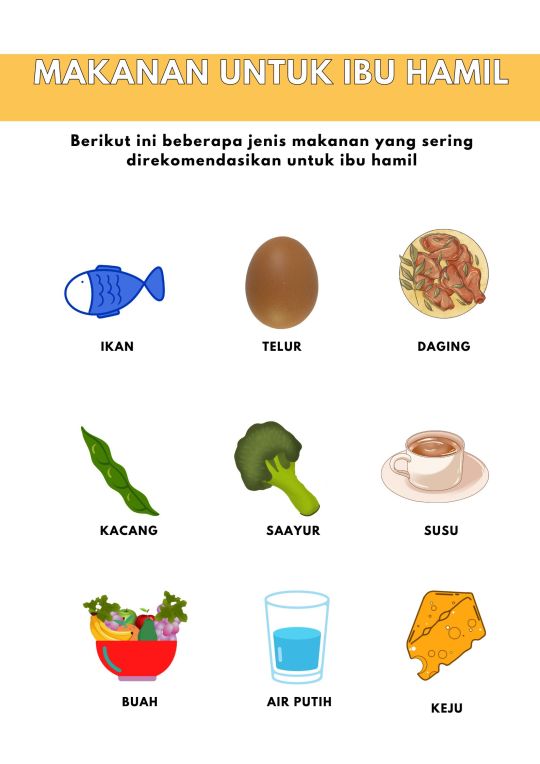

PENDAHULUAN
1.1 Latar Belakang
Perawatan kehamilan ini merupakan salah satu faktor yang amat perlu diperhatikan untuk mencegah terjadinya komplikasi dan kematian ketika persalinan, di samping itu juga untuk pertumbuhan dan kesehatan janin. 4 Perawatan kehamilan yang perlu diperhatikan adalah yaitu perawatan diri (kulit, gigi mulut, perawatan kuku) payudara, imunisasi, senam hamil, pemeriksaan kehamilan, serta gizi untuk perkembangan janin. 4 Perawatan kehamilan dipengaruhi oleh factor predisposing, faktor pendukung dan faktor faktor penguat, seperti pengetahuan yang diperoleh melalui pemahaman tentang perawatan kehamilan.5 Beberapa faktor yang turut berpengaruh di antaranya usia, pendidikan, pekerjaan, paritas,dukungan keluarga, dan ekonomi.(Gamelia et al., 2013)
Hasil penelitian menunjukkan bahwa stunting dipengaruhi oleh faktor pendapatan keluarga, pengetahuan gizi ibu, pola asuh ibu,riwayat infeksi penyakit, riwayat imunisasi, asupan protein, dan asupan ibu. Asupan ibu terutama saat hamil merupakan salah satu factor yang berperan penting. Gizi janin bergantung sepenuhnya pada ibu, sehingga kecukupan gizi ibu sangat memengaruhi kondisi janin yang dikandungnya. Ibu hamil yang kurang gizi atau asupan makanan kurang akan menyebabkan gangguan pertumbuhan janin dalam kandungan.(Ekayanthi and Suryani, 2019)
Kondisi-kondisi tersebut dapat menjadikan permasalahan secara psikologis bagi ibu hamil dan ibu nifas, yang dapat menimbulkan kecemasan. Sebuah studi melaporkan bahwa gejala depresif dan kecemasan pada wanita hamil setelah deklarasi pandemi COVID-19 lebih tinggi dibandingkan sebelum deklarasi COVID-19, termasuk kecenderungan ingin melukai diri sendiri. Hal tersebut dapat menyebabkan kondisi bahaya selama kehamilan, sehingga mempengaruhi kondisi ibu dan janin.(Yuliani and Aini, 2020)
Daftar Pustaka
Ekayanthi, N.W.D., Suryani, P., 2019. Edukasi Gizi pada Ibu Hamil Mencegah Stunting pada Kelas Ibu Hamil. J. Kesehat. 10, 312. https://doi.org/10.26630/jk.v10i3.1389
Gamelia, E., Sistiarani, C., Masfiah, S., 2013. Determinan Perilaku Perawatan Kehamilan. Kesmas Natl. Public Health J. 8, 133. https://doi.org/10.21109/kesmas.v8i3.358
Yuliani, D.R., Aini, F.N., 2020. KECEMASAN IBU HAMIL DAN IBU NIFAS PADA MASA PANDEMI COVID-19 DI KECAMATAN BATURRADEN. J. Sains Kebidanan 2, 11–14. https://doi.org/10.31983/jsk.v2i2.6487
1 note
·
View note
Text
Theogamia
Hear me, wing-footed Iris, and rejoice!
Today we celebrate millennia of love in this cherished union.
This heiros gamos, this sacred marriage
Shines with hope and lasting cheer
Beloved Hera and Zeus, our King and Queen
Delight in their abiding alliance
I pray you fly fast, sweet messenger,
and sing of my felicitations
On this joyous day
174 notes
·
View notes
Text

a devotional piece for Zeus and Hera, based on their statues in the Pallas Athene fountain
click for better quality!
my art: do not repost
#zeus worship#hera worship#zeus and hera#hera gamelia#hellenic polytheism#polytheism#hellenism#hellenic worship#hellenic pagan#hellenic religion#hellenic reconstructionism#my art
154 notes
·
View notes
Text
AstraZeneca to test Sputnik-V component in clinical trial of its vaccine
AstraZeneca to test Sputnik-V component in clinical trial of its vaccine

Updated Sat, 12th Dec 2020 02:22 AM IST
The Russian Direct Investment Fund (RDIF) and the Gamalia Institute have approved AstraZeneca in one of its two clinical trials (clinical trials) after the Sputnik-V vaccine showed more than 90 percent efficacy in the preliminary results of the clinical trial. Use offered.
Now the Russian Direct Investment Fund said on Friday that the pharmaceutical…
View On WordPress
#astrazeneca#clinical#component#Gamalia institute#Gamelia Institute#RDIF#Russian Direct Investment Fund#Sputnik-V vaccine#SputnikV#test#trial#vaccine
0 notes